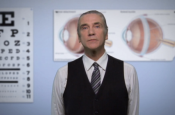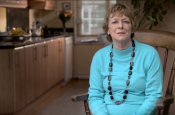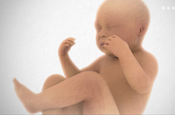 No CPD Points
No CPD Points
This programme looks at the symptoms of flashes and floaters and provides guidance for optometrists on assessment and appropriate management of patients, including referral decisions.
Topics: Retinal detachment, Posterior vitreous detachment, Migraine, Schafer's sign, Tobacco dust, Dilation, Volk, Headset BIO, Referral, Slit lamp, Vitreous, Newly qualified.
Area of interest: MECS

No CPD Points
Domains: Clinical practice
![]()
In this recorded lecture, Dr Lindsay Rountree explores non-glaucomatous visual fields, covering the choice of test, interpretation of field plots, and appropriate referral. At the end of the lecture, Dr Rountree answers questions raised during her talk.
Topics: Neurological, Threshold, Visual pathway, Hemianopia, Quadranopia, Pituitary, Tumour, Stroke.

No CPD Points
Domains: Leadership and accountability
![]()
In this recorded lecture, an expert panel lead by Philippa Shaw looks at the leadership role that all optometrists need to take in community practice and how they may influence colleagues in their team. The panel discusses common situations that occur every day in practice as well as optometrists’ responsibilities.
Topics: Referrals, Multi-disciplinary, Governance, Records, Delegated tasks, Pre-screening, Audit, Supervision.

No CPD Points
Domains: Clinical practice, Communication
![]()
![]()
This recorded lecture by consultant ophthalmic surgeon, Professor Heinrich Heimann provides an overview of the most important malignancies and pre-malignancies of the ocular surface and anterior chamber and how to spot them.
Topics: Melanoma, Lymphoma, Naevus, Tumour, Conjunctiva, Ciliary body, Iris, Anterior chamber, Pigment, Cyst, Metastisis, Papilloma, Squamous cell.
 No CPD Points
No CPD Points
It is essential that optometrists keep good clinical records, not only as part of good practice, but also because the GOC considers that failure to keep acceptable and adequate records constitutes impaired fitness to practice. This training resource aims to provide clear guidance for optometric practitioners in the art of good record keeping, and looks at what the serious implications can be when adequate records are not kept.
Topics: Record keeping, Referral, Legal, Retinal detachment, Flashes, Floaters, Fitness to practice, GOC, Communication.
No  CPD Points
CPD Points
![]()
![]()
![]()
This series takes a close look at the effects of our modern lifestyle on the eye, focusing on smoking, UV light exposure, nutrition and driving. This course discusses the current legal requirement for driving, important new research highlighting both the visual and cognitive influences upon driving ability, and then reviews the legal responsibility of the optometrist when standards are not achieved.
Topics: Vision standards, Patient confidentiality, Data protection, Contrast sensitivity, Cognitive, Reaction times, DVLA, Class 1, Class 2, Visual fields, Acuity, Newly qualified.
 No CPD Points
No CPD Points
![]()
![]()
![]()
This series takes a close look at the effects of our modern lifestyle on the eye, focusing on smoking, UV light exposure, nutrition
and driving. The aim of this course is to emphasise the link between
poor nutrition and certain eye disorders and to establish how best to
communicate accurate and relevant information.
Topics: Supplementation, Lutein, Zeaxanthin, Record keeping, Newly qualified.
 No CPD Points
No CPD Points
![]()
![]()
![]()
This series takes a close look at the effects of our modern lifestyle on the eye, focusing on smoking, UV light exposure, nutrition and driving. This course discusses the major impact of smoking upon eye health and interviews three experts in the field of cessation to show how optometrists can play an important role in helping people access cessation services in the UK.
Topics: GP, Cessation, Primary care, Allied health professionals, Pharmacist, Dry eye, Newly qualified.
 No CPD Points
No CPD Points
This series takes a close look at the effects of our modern lifestyle on the eye, focusing on smoking, UV light exposure, nutrition and driving. This course discusses the major impact of short wavelength and visible light upon the eye and surrounding tissues and considers the best approach to communicate this and to assess any impact.
Topics: Pingueculum, Pterygium, Phototoxicity, Macula, Filters, Sunglasses, Newly qualified.
 No CPD Points
No CPD Points
![]()
![]()
![]()
This programme looks in broad terms at the four main ethnic groups in the UK and the predominant eye conditions found within each group.
Topics: Cultural, Glaucoma, Diabetes, AMD, Diversity, Communication, Interpreters, Language, Equality.

No CPD Points
Domains: Clinical practice, Communication
![]()
![]()
This lecture by consultant ophthalmic surgeon, Professor Heinrich Heimann, aims to increase clinical skills in differentiating between benign and suspicious lesions that require monitoring or referral. It focuses on the more common causes including choroidal naevus, choroidal melanoma and CHRPE and includes imaging, referral and monitoring strategies.
Topics: Fundus, Retina, Pigmented, Malignant, Tumour, Choroidal melanoma, Choroidal naevi, CHRPE, Vortex vein ampulla, Peripheral disciform, Differential diagnosis, OCT, Referral.
 No CPD Points
No CPD Points
This docu-drama programme explores the condition of dementia and covers the key areas in the management of patients suffering from dementia.
Topics: Legal, Vulnerable adults, Communication, Safeguarding, Alzheimers, Hallucinations, Visual assessment, Cognitive impairment, Domiciliary, Consent, Ageing.
 No CPD Points
No CPD Points
This training programme gives practical advice and guidance on using history and symptom taking to enable a full understanding of a patient's needs for work and leisure.
Topics: Dispensing, Lenses, Tints, Multifocals, Driving, Sport, Occupational, Children, Ageing eye, Safety spectacles, Lighting.

No CPD Points
Domains: Clinical practice
![]()
The first of two programmes discussing embryology and the developing eye, this course looks at genetics and inheritance of a range of eye diseases, as well as the first three months of gestation and how external and internal influence may trigger eye conditions.
Topics: Choroid, Ciliary body, Coloboma, Colour vision defect, Congenital, Rubella, Cataract, Lens, DNA, Dominant, Embryo, Epithelium, Genetics, Glaucoma, Hyaloid artery, Inheritance, Iris, Meiosis, Mitochondrial, Multifactorial, Mutation, Myopia, RNA, Recessive, Retinoblastoma, Sclera, Toxoplasmosis, X-linked, Y-shaped suture, Zika virus, Young eye series.

No CPD Points
Domains: Clinical practice, Communication
![]()
![]()
The second of two programmes discussing embryology and the developing eye, this course looks at the final six months of gestation, the birth process and the early period post-partum, and how external and internal influence may trigger eye diseases.
Topics: Binocularity, Asphyxia, Congenital, Glaucoma, Cranial nerves, Down syndrome, Duane syndrome, Emmetropisation, Extraocular muscles, Fibrosis, Foetal alcohol syndrome, Gestational diabetes, Horner’s syndrome, Hydrocephalus, Keratoconus, Leukocoria, Oculomotor disorders, Ophthalmoplegia, Pupil, Reflex test, Retinal detachment, Retinopathy of prematurity, Risk factors, Sixth nerve palsy, Smoking, Spina bifida, Stereopsis, Trisomy 21, UV, Visual development, Vitamin A deficiency, Young eye series.